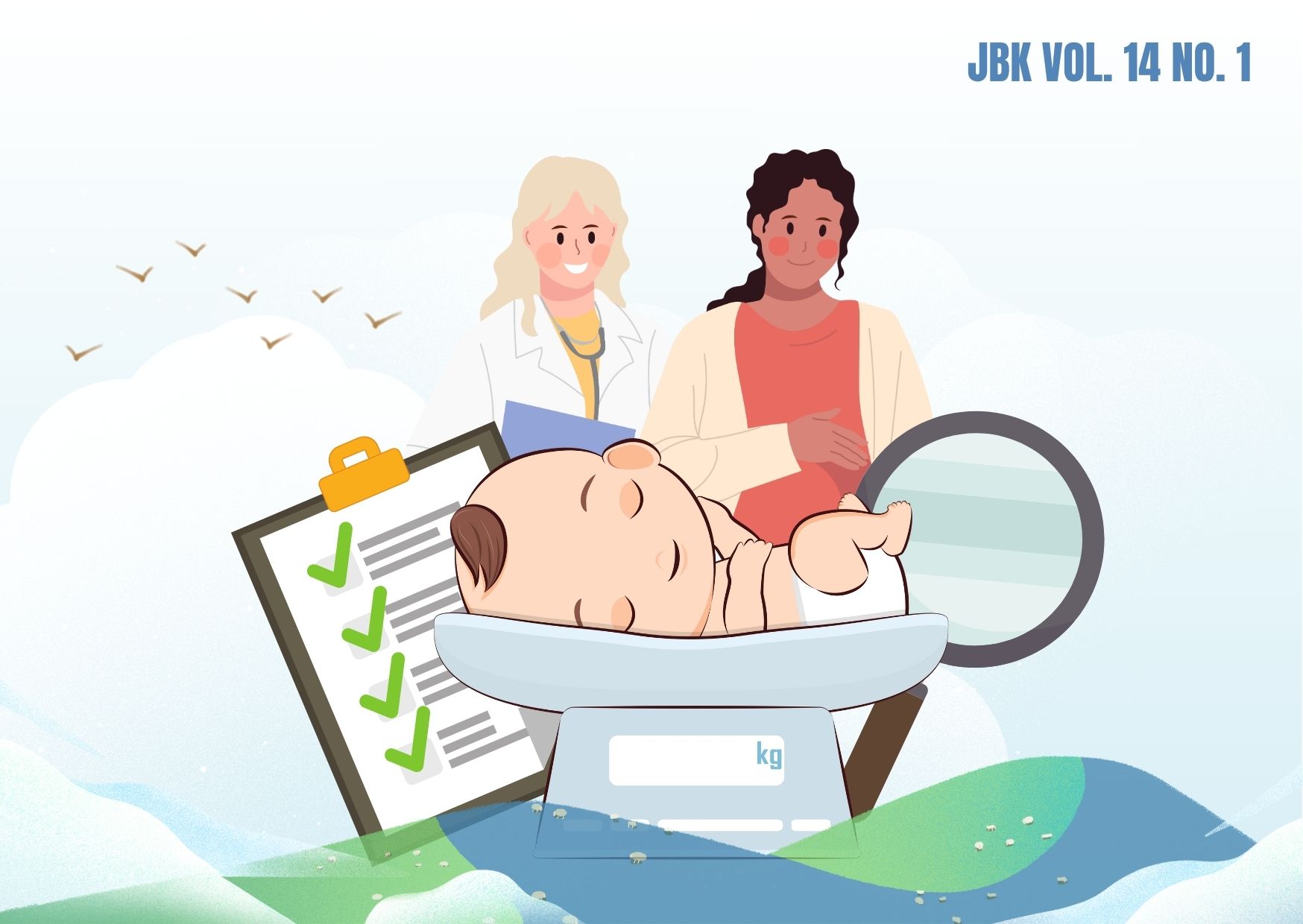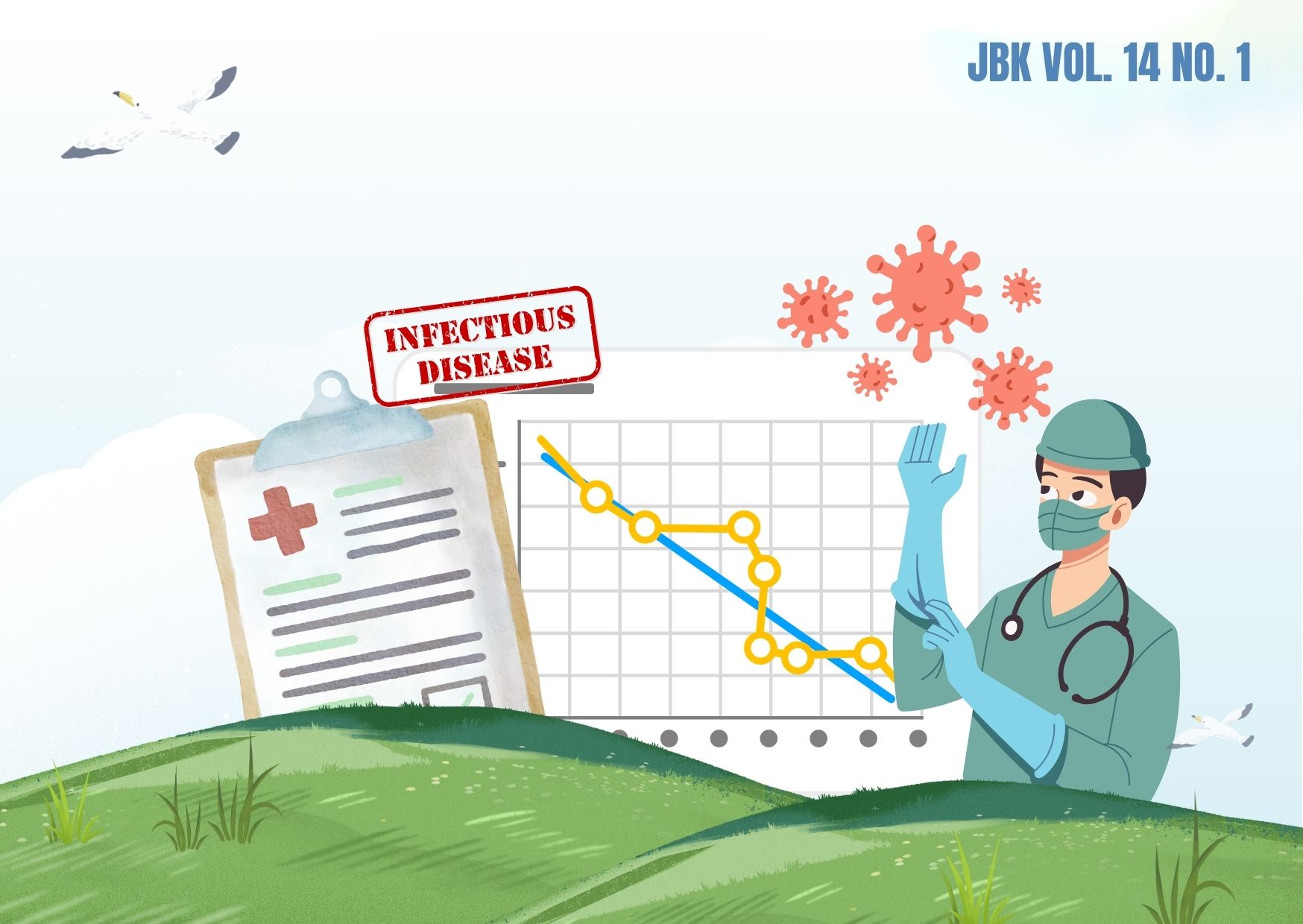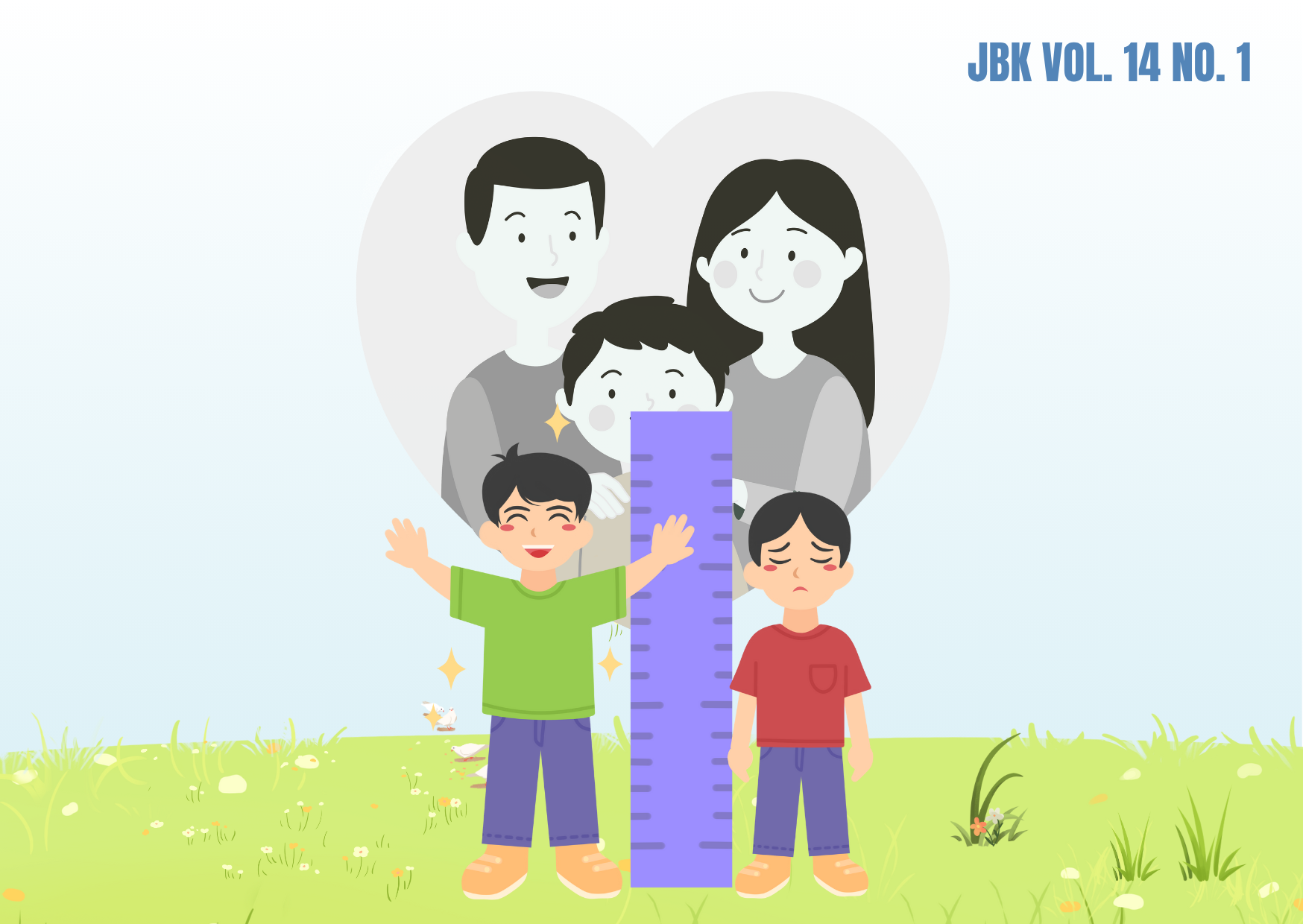OPTIONS OF LONG-TERM CONTRACEPTIVE METHODS IN MARRIED WOMEN IN SOUTH SULAWESI (ANALYSIS OF IDHS 2017)
Downloads
The long-term contraceptive method is an effective method for preventing pregnancies. However, users of long-term contraceptive methods are considerably lower compared to those of non-long-term contraceptive methods in South Sulawesi. The research objective was to examine the determinants of choosing long-term contraceptive methods in South Sulawesi. This study used data from the 2017 Indonesia Demographic and Health Survey by analyzing 583 married women who were using contraception in South Sulawesi. A descriptive analysis was employed to estimate the prevalence of long-term contraceptive methods. Meanwhile, the Chi-square test and logistic regression analysis were used to identify the determinants of choosing long-term contraceptive methods. The results from the descriptive analysis showed about 18.9% of the sampled married women were long-term contraception users, among those were implant users (10.2%). More married women with higher education and more parity chose to use it. The better the knowledge about the type of contraception, the greater the chance to use long-term contraceptive methods. Women who were told about side effects, sources of government services, and free fees were significantly influenced to use long-term contraception. Women who received staff visits and visited health facilities were less likely to choose the long-term methods. This implies that contact with field oMKJPlong-term contraceptive methodslong-term contraceptive methodsfficers has not been able to motivate prospective acceptors to use . Improved education and knowledge, especially about types of contraception and side effects, are needed to increase women's long-term contraception use alongside. The quality of services at free/subsidized costs also needs to be improved, and training should be given for capacity building, especially in communication skills, to family planning field officers.
Adedini, S.A., Omisakin, O.A. and Somefun, O.D., 2019. Trends, Patterns and Determinants of Long-Acting Reversible Methods of Contraception among Women In Sub-Saharan Africa. PLOS ONE, 14(6), p.e0217574.
Assagaff, S.N.R., 2018. Hubungan Tingkat Pengetahuan Akseptor Wanita Tentang MKJP dengan Minat Pemilihan Metode Kontrasepsi di Puskesmas Tegalrejo Yogyakarta. Yogyakarta.
Azis, R., Syafar, M., Zulkifli, A. and Seweng, A., 2016. Effect of Family Wealth and Attitudes toward Unmet Need for Family Planning Among Fertile Couples in Makassar , South Sulawesi , Indonesia. International Journal of Sciences: Basic and Applied Research (IJSBAR). [online] Available at: <https://www.semanticscholar.org/>.
Bhandari, R., Pokhrel, K.N., Gabrielle, N. and Amatya, A., 2019. Long Acting Reversible Contraception Use and Associated Factors among Married Women of Reproductive Age in Nepal. PLoS ONE, 14(3), pp.1–13.
Fekadu, G.A., Omigbodun, A.O., Roberts, O.A. and Yalew, A.W., 2019. Factors Associated With Long Acting and Permanent Contraceptive Methods Use in Ethiopia. Contraception and Reproductive Medicine, 4(1), pp.1–11.
Fitrianingsih, A.D.R. and Melaniani, S., 2016. Faktor Sosiodemografi yang Memengaruhi Pemilihan Metode Kontrasepsi. Jurnal Biometrika dan Kependudukan, 5(1), pp.10–18.
Gayatri, M., 2020. The Utilization of Long-Acting Reversible Contraception and Associated Factors Among Women in Indonesia. 12(3), pp.110–120.
Gibbs, S.E., Rocca, C.H., Bednarek, P., Thompson, K.M.J., Darney, P.D. and Harper, C.C., 2016. Long-Acting Reversible Contraception Counseling and Use for Older Adolescents and Nulliparous Women. Journal of Adolescent Health.
Hajar, M., 2018. Determinan Penggunaan Metode Kontrasepsi IUD pada PUS di Wilayah Kerja Puskesmas Pontap Kota Palopo. Skripsi. Makassar: Universitas Hasanuddin.
Harzif, A.K., Lovita, B.T., Mariana, A., Malik, D.M. and Silvia, M., 2019. Factors Associated with The Utilization of Long-Acting Reversible Contraceptives among Family Planning Clients at The Pameungpeuk Rural Hospital , Indonesia [version 2 ; peer review : 2 approved] Achmad Kemal Harzif. F1000Research 2019, 7:1891, 7(1819), pp.1–14.
Henke, L., Martins, S. and Boraas, C., 2020. Barriers to Obtaining Long-Acting Reversible Contraception Among Low-Income Women [09I]. Obstetrics & Gynecology, 135, p.94S.
Mahmud, A., 2020. Analisis Tenaga PKB/PLKB Hasil Remedial Ujian Kompetensi Provinsi Sulawesi Selatan Tahun 2019. Makassar.
Mario, E. and Irma, A., 2020. Quality of Care in Modern Contraceptive Service Delivery in the Public and Private Sector: A Cross Sectional Study in Indonesia. Global Journal of Health Science, 12(7), p.102.
National Population and Family Planning Commission, 2018. Survei Demografi dan Kesehatan Indonesia 2017. National Population and Family Planning Commission, Central Bureau of Statistics, Ministry of Health, USAID.
National Population and Family Planning Commission, 2020. Rencana Strategis BKKBN 2020-2024.
Nurhajati, W.A., 2018. Peningkatan Kompetensi Penyuluh Keluarga Berencana Provinsi Jawa Timur Melalui Diklat Berbasis E-Learning. In: The ICECRS. pp.183–196.
Ontiri, S., Ndirangu, G., Kabue, M., Biesma, R. and Stekelenburg, J., 2019. Long-Acting Reversible Contraception Uptake and Associated Factors among Women of Reproductive Age in Rural Kenya. pp.1–11.
Peipert, J.F., Zhao, Q., Allsworth, J.E., Petrosky, E., Madden, T., Eisenberg, D. and Secura, G., 2011. Continuation and satisfaction of reversible contraception. Obstetrics and Gynecology, 117(5), pp.1105–1113.
Sari, D.N., 2020. Sex Preference on Child and Modern Contraception Use in Fertile Age Women in Indonesia (Analysis of IDHS 2017). 9(July), pp.77–86.
Secura, G.M. and McNicholas, C., 2013. Long-Acting Reversible Contraceptive Use Among Teens Prevents Unintended Pregnancy: A look at The Evidence. Expert Review of Obstetrics and Gynecology, 8(4), pp.297–299.
Sedgh, G. and Hussain, R., 2014. Reasons for Contraceptive Nonuse among Women Having Unmet Need for Contraception in Developing Countries. Studies in Family Planning, 45(2), pp.151–169.
Septalia, R. and Nunik Puspitasari, 2016. Faktor yang Memengaruhi Pemilihan Metode Kontrasepsi. Jurnal Biometrika dan Kependudukan, 5(2), pp.91–98.
Tibaijuka, L., Odongo, R., Welikhe, E., Mukisa, W., Kugonza, L., Busingye, I., Nabukalu, P., Ngonzi, J., Asiimwe, S.B. and Bajunirwe, F., 2017. Factors influencing Use of Long-Acting Versus Short-Acting Contraceptive Methods among Reproductive-Age Women In A Resource-Limited Setting. pp.1–13.
Triyanto, L. and Indriani, D., 2018. Faktor yang Mempengaruhi Penggunaan Jenis Metode Kontrasepsi Jangka Panjang (MKJP) pada Wanita Menikah Usia Subur di Provinsi Jawa Timur. IJPH, 13(2), pp.244–255.
Ulya, D.I. and Mahmudah, 2020. Decomposition Method for Forecasting The Number of Participants of New Family Planning in Surabaya. Jurnal Biometrika dan Kependudukan, 9(1), pp.36–43.
Wahyuddin, N.R., 2017. Gambaran Penatalaksanaan Program KB Melalui Metode Kontrasepsi Jangka Panjang (MKJP) di Kecamatan Ujung Pandang Kota Makassar. Skripsi. Universitas Islam Negeri Alauddin Makassar.
Copyright©2022 Jurnal Biometrika dan Kependudukan (Journal of Biometrics and Population)
This work is licensed under a Creative Commons Attribution-NonCommercial-ShareAlike 4.0 International License.
1. Copyright of all journal manuscripts is held by the Jurnal Biometrika dan Kependudukan.
2. Formal legal provisions to access digital articles of the electronic journals are subject to the provision of the Creative Commons Attribution-ShareAlike license (CC BY-NC-SA), which means that Jurnal Kesehatan Biometrika dan Kependudukan to keep, transfer media/format, manage in the form of databases, maintain, and publish articles.
3. Published manuscripts both printed and electronic are open access for educational, research, and library purposes. Additionally, the editorial board is not responsible for any violations of copyright law.



































